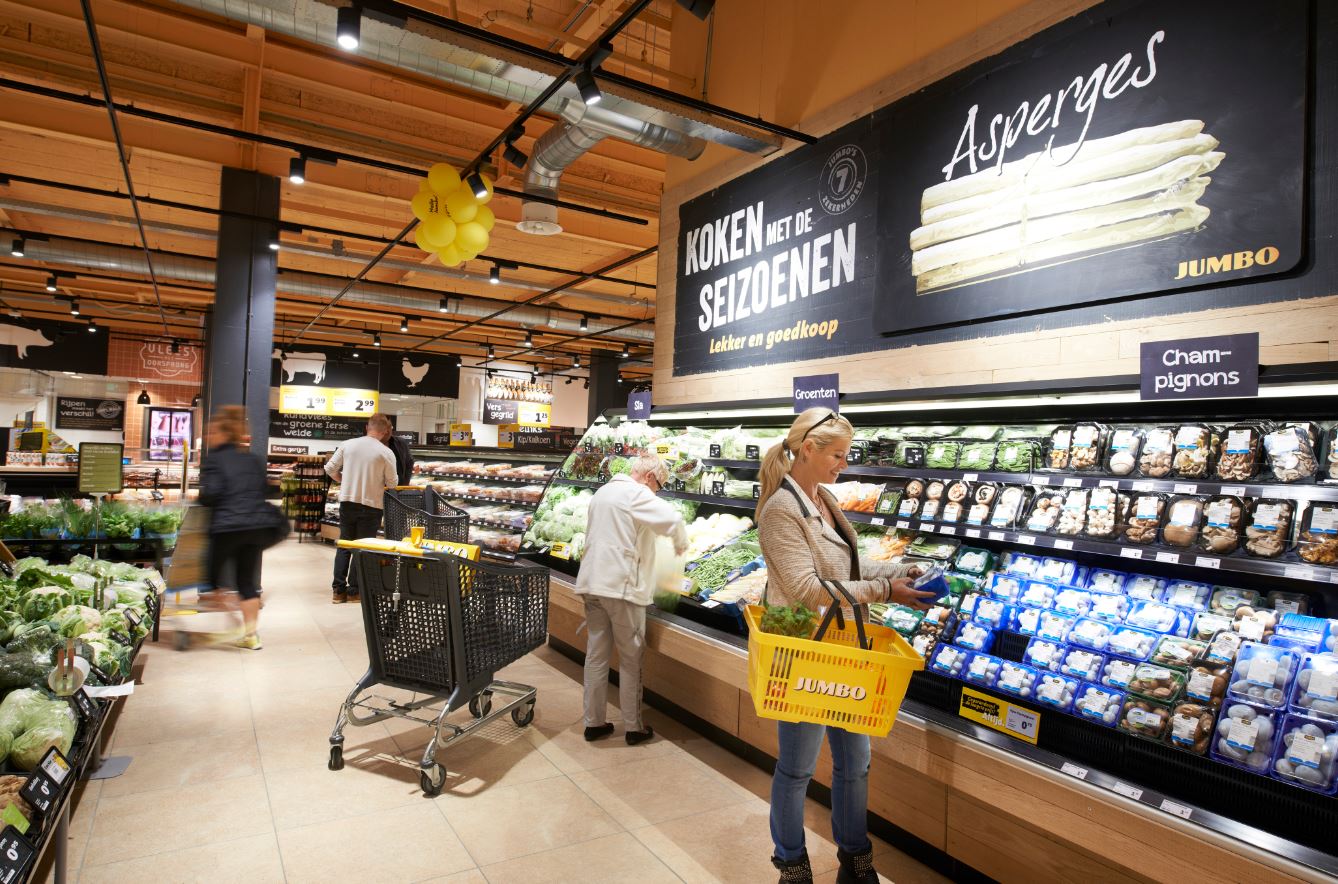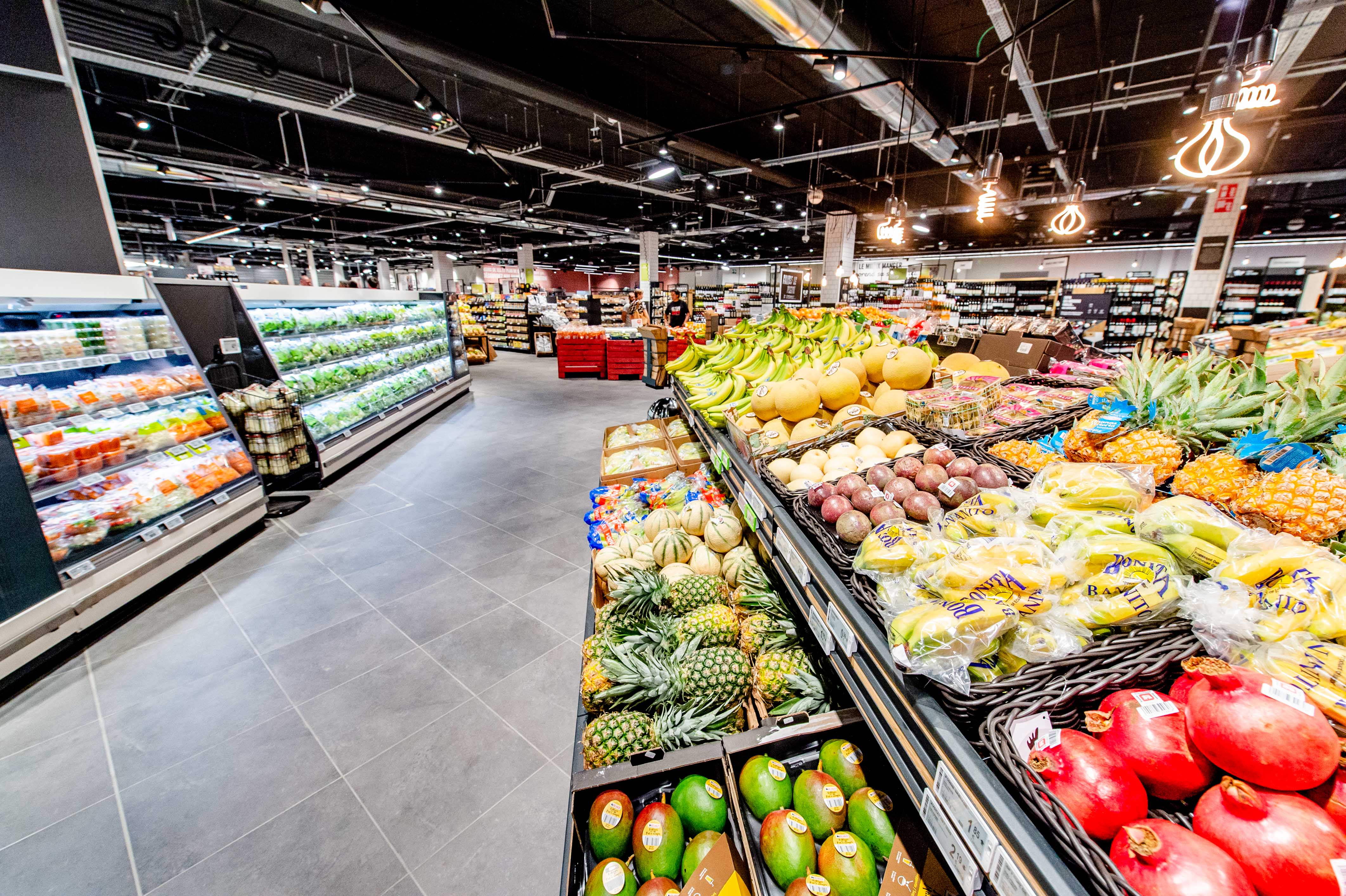Food from Holland

Dutch food
Did you use to love eating Dutch waffle cookies back in The Netherlands? Or are you dying to eat a sandwich with Dutch chocolate sprinkles (hagelslag) once more? It is possible! At Dutch Expat Shop, the online Dutch store, you can buy all kinds of Dutch food online and have them delivered to your place of residence abroad. Enjoy over 400 well-known brands at the lowest prices. Introduce your international colleagues to Dutch rusk with “mice” to celebrate the birth of your child. Have a look at our enormous assortment and make your choice. From Dutch waffle cookies to chocolate sprinkles, you can buy all your Dutch food directly online!
-
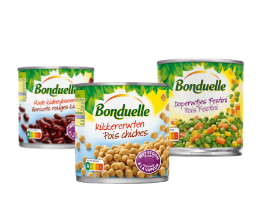 Canned Food
Canned Food -
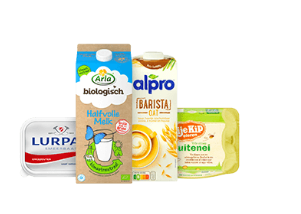 Dairy
Dairy -
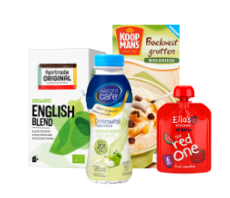 Organic and Ethical
Organic and Ethical -
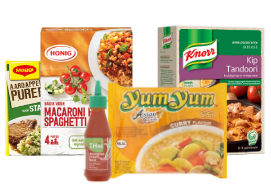 Meals
Meals -
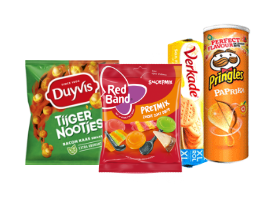 Sweets and Snacks
Sweets and Snacks -
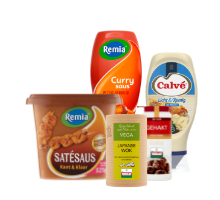 Sauces and Spices
Sauces and Spices -
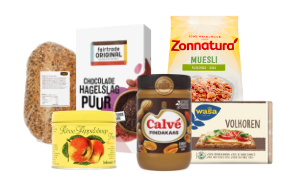 Breakfast and Lunch
Breakfast and Lunch -
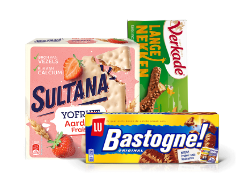 Cookies
Cookies -
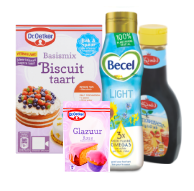 Baking
Baking -
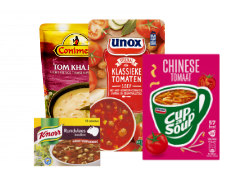 Soup Products
Soup Products -
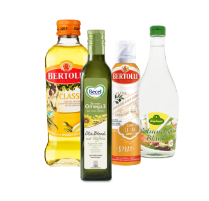 Oil and Vinegar
Oil and Vinegar All your favorite Dutch and Belgian brands in one place.
Shop online at supermarkets from NL and BE
Sweet and savory: the best Dutch snacks
The Dutch have many kinds of snacks you can buy on the market or while strolling through one of the cities, many of which are fried. The typical Dutch street food is certainly different compared to those in other countries and therefore always a unique experience.
Starting off with the typical fried snacks, Bitterballen, Kroketten (Croquettes) and Frikandellen are the most popular choices for fried street food. Bitterballen and Kroketten both contain a mixture of a ragout of meat, which is then rolled in breadcrumbs and fried. The only difference between these two is their shape: while the Bitterballen are small round balls, the Kroketten are shaped like a sausage and can also be eaten on bread. Along the coast or in harbor cities, Kibbeling also is a popular fried snack. Kibbeling is also eaten throughout the country on market days. It’s made by dipping pieces of fish into a batter and afterwards fried until they look nice and golden. Traditionally the type of fish is cod, but nowadays other species of white fish are also used. Kibbeling is typically served with garlic sauce or rémoulade.
Kaasbroodjes are a very popular choice as a small snack or lunch throughout the day, and next to markets, they can also be found in bakeries or supermarkets. As the name might imply, Kaasbroodjes contain one of the most popular Dutch ingredients: cheese! Cheese is tightly wrapped in puff pastry and is then baked in the oven for a great hearty snack.
One of the typical street food snacks that the Dutch always get excited about showing to foreigners is raw herring (haring). As the name already suggests, this delicacy is raw, cured herring, which is often served as a sandwich with pickles and onion. A popular way of eating raw herring also includes hanging it up from its tail and taking bites from it.
Cakes, cookies and pastries
Next to their mostly savory street food, traditional Dutch food also includes numerous cakes, cookies and pastries. Stroopwafels can be found as street food as well as in regular grocery stores and are made of two thin waffles with a syrup filling in the middle. When bought as street food, the stroop waffles are typically still warm, which makes them extra delicious. To warm up store bought stroop waffles, the Dutch often simply put them on top of their tea or coffee for a couple of minutes – to get the syrup to soften.
Poffertjes are a traditional Dutch food that dates back to the mid-1700s. The only difference being added yeast, Poffertjes are basically small and slightly undercooked pancakes that typically get served with powdered sugar and butter. They can often be found at festivities of any kind and are especially popular during winter.
Besides poffertjes, the Dutch also eat regular pancakes. The Dutch pancakes, however, do not necessarily have to be sweet but can also be savory with cheese, ham or bacon. Generally, Dutch pancakes also do not include any yeast or baking powder, which generally makes them flatter than other pancake types. A popular version is apple bacon pancakes, which offers a good balance between both sweet and savory.
Dutch apple pie is one of the most traditional cakes made for celebrations of any kind. It typically has a thick crust which partially covers the top as well. The filling is made with apples, cinnamon and sugar and optionally includes raisins or amandelspijs , a marzipan-like almond paste that compliments the taste of apples and raisins very well.
Breakfast
The most typical breakfast food in the Netherlands is bread. What may sound boring at first is quite the opposite: there are hundreds of different toppings, so you can enjoy every piece of bread with a different taste which varies between savory and sweet. However, there definitely are some favourites that everyone eats. One of the most popular breakfast choices is Hageslag – chocolate sprinkles that come in various shapes and flavors. Butter or peanut butter are typically used to make the sprinkles stick to the bread. Another sweet treat is Speculoos, a paste similar to peanut butter which tastes like cinnamon. One thing that of course also can’t be missing at the breakfast table is cheese. The Dutch are famous for their Gouda, which is named after a Dutch city, but also other sorts of cheese are very popular. From young to old, cow cheese to goat cheese – at least one kind can always be found in the Dutch kitchen.
For those that do not like bread, the Dutch have another delicacy – Vla. This sweet custard type of dairy serves both as a breakfast and as a dessert. Traditionally Vla is vanilla flavored but can also taste like chocolate, caramel, apple or almonds.
Ontbijtkoek, or breakfast cake, is a spiced bread that is traditionally eaten as breakfast or in the afternoon with coffee and tea. It is sweeter than bread and due to its rye flour has a denser consistency than most breads. However, just like bread, it is often eaten with butter.
Lunch
Traditionally, oftentimes Dutch people eat for lunch what they have for breakfast: bread. No matter whether sweet or savory, warm from the oven or as a grilled cheese tosti – there's always a way to eat bread twice a day and still have some variation in your diet.
Dinner
One of the most traditional dinner foods in the Netherlands is mashed potato, also called Stamppot. This, however, is no traditional mashed potato dish like you may know. Next to mashed potatoes, it can include a variety of ingredients. These are being stamped together with the potato, which is where this dish got its name from. Some of the most popular variations include cauliflower, red beets, leek or kale. If your stamppot is made with carrot and onion, this is typically referred to as Hutspot rather than stamppot and translated means “mix-pot”. Additionally, this dish is often served with grilled sausage and some gravy and is especially tasty in the colder winter months. Many people also prefer to put some fruit through their stamppot, usually an apple or sliced pineapple.
Another traditional dish especially for the cold winter days is snert, a thick pea soup which is often having pieces of smoked sausage cut into it.
Dutch Festive Foods
Of course, the big holidays in the Netherlands all come with their own traditional treats and festive food. The most important holidays hereby include King's Day, Sinterklaas (the Dutch Santa Claus) and Christmas & New Year’s.
King’s Day food
To celebrate the birthday of the King, the Dutch traditionally eat orange Tompouces. A tompouce consists of three layers of puff pastry, with a sweet custard cream in the middle and an icing layer on the top. On King's Day, this icing traditionally has an orange color. Another sweet cake traditionally served with King's Day are Oranje Cakejes (Orange cakes), which are slightly spiced cakes with orange zest, which is what they got their name from. Despite being called orange cakes, the icing on top of the cakes is traditionally pink.
Typical snacks for the King's Day are ‘Kaasplanken’ (Cheese platters) or ‘Borrelplanken’ which are essentially charcuterie boards. While a cheese platter is typically only consisting of different types of cheese, a Borrelplank can include a variety of snacks, among which sausages, nuts, bread and olives. The Dutch word “Borrel” is used for a drink you have with friends, family or colleagues – so a Borrelplank is a very popular snack to have with your beverages.
Sinterklaas
Sinterklaas is the Dutch variation of Santa Claus. A typical present that people receive with Sinterklaas is a chocolate letter – chocolate in the form of the first letter of their name. These letters come in various different flavors and of course shapes – one for each letter of the alphabet.
Pepernoten are small, brown cookies filled with particular spices. These spices are usually a mixture of cinnamon, nutmeg, cloves, ginger, cardamom and white pepper. Pepernoten are one of the most traditional Sinterklaas treats and can be found at every grocery store.
Speculaas is one of the most popular spices during the Sinterklaas period. Speculaas is used in several baked goods, from cookies to apple pie. Speculaas cookies taste very similar to pepernoten, but they are shaped differently. Speculaas contains the same ingredients.
Dutch Christmas & New Year Food
A typical dinner around Christmastime is Gourmetten or also called Raclette. It is an indoor electrical barbecue, where every four people or so share a grill plate that they can fill with their favorite pieces of food, generally meat. The actual dinner usually takes quite long, but it has a festive ambiance around it and lives up to the idea of Christmas - spending quality time together while eating delicious food.
Especially on New Year's Eve, Dutch people often eat Oliebollen. Oliebollen are fried balls of dough, often filled with apples and raisins and topped off with powdered sugar.
The Kerststol is a Christmas bread with an almond paste in the middle and various dried fruit like raisins incorporated into the dough. The top of the bread is covered in powdered sugar, to add some extra sweetness to it. When eating the Christmas bread, the almond paste can be spread over the entire bread, to evenly distribute it.

